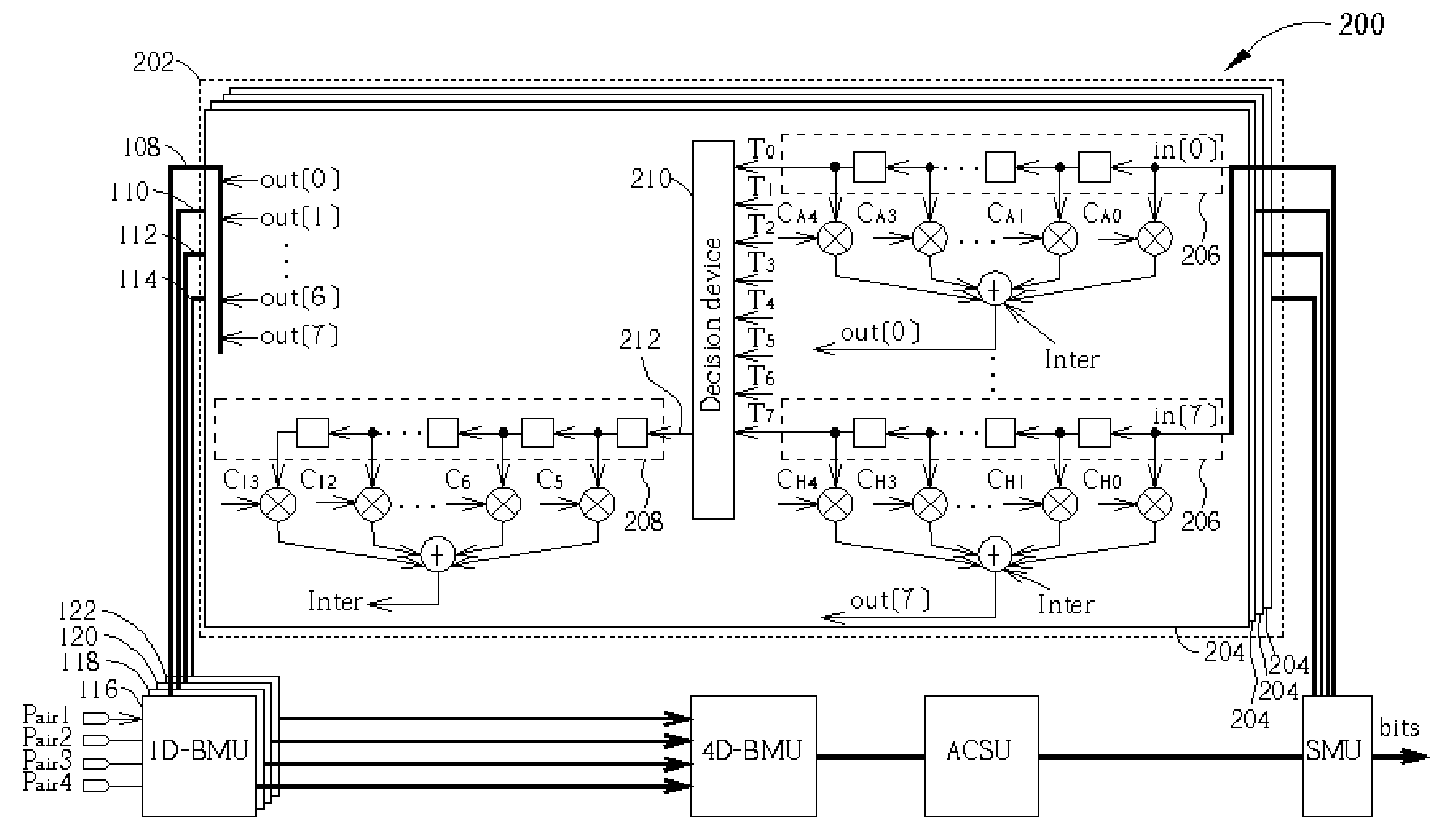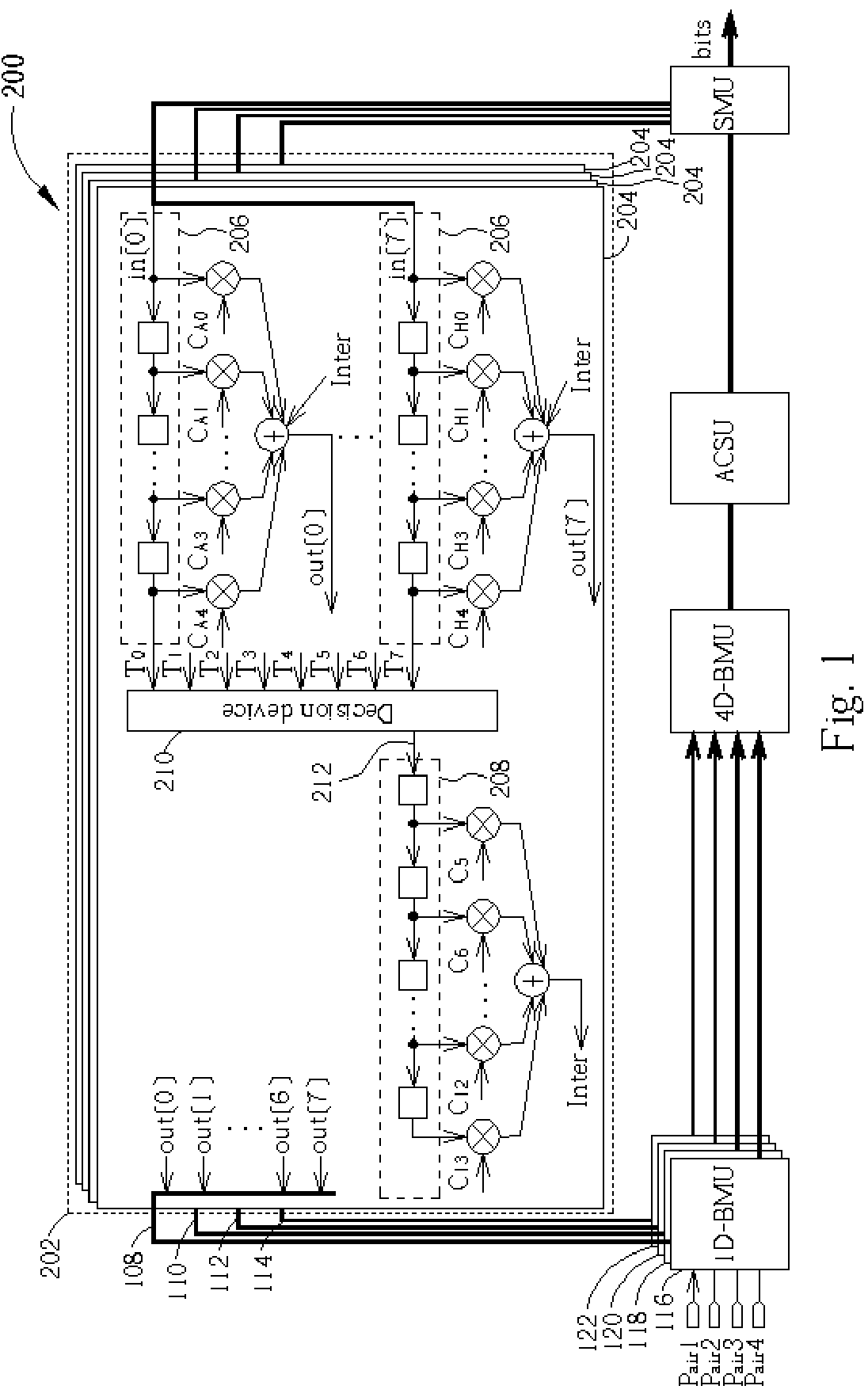Parallel decision-feedback decoder and method for joint equalizing and decoding of incoming data stream
a data stream equalization and data stream technology, applied in the field of data communication, can solve the problems of inability to meet the needs of data transmission, and inability to achieve the effect of asynchronous data transmission,
- Summary
- Abstract
- Description
- Claims
- Application Information
AI Technical Summary
Benefits of technology
Problems solved by technology
Method used
Image
Examples
first embodiment
[0021]FIG. 2 is a block diagram detailing the implementation of a first embodiment decision device 300 for use as the decision device 210 of FIG. 1. The first decision device 300 compares the survivor metrics at the outputs T0, T1, T2, T3, T4, T5, T6, T7 of the stat shift registers 206 shown in FIG. 1. The decision device 300 chooses a survivor metric 212 according to the survivor metrics at the last taps (i.e. the 5th taps) of the state shift registers 206. In this embodiment, the chosen survivor metric 212 outputted by the first decision device 300 is the survivor metric being present at the greatest number of outputs T0, T1, T2, T3, T4, T5, T6, T7 of the state shift registers 206. For example, if a particular survivor metric is received on outputs T0, T1, T3, T4, T6, and T7, this particular survivor metric has the most likelihood among others, is considered the most possible convergence, and is therefore chosen.
second embodiment
[0022]FIG. 3 is a block diagram detailing the implementation of a second embodiment decision device 400 for use as the decision device 210 of FIG. 1. The second decision device 400 includes an average unit 402 and a value selector 404. The average unit 402 simply averages the survivor metrics received on the outputs T0, T1, T2, T3, T4, T5, T6, T7 of the state shift registers 206. The average value 406 output by the average unit 402 is used by the value selector 404 to determine the appropriate survivor metric 212, which is then output by the second decision device 400. In this embodiment, the value selector 404 selects a survivor metric being closest to the average value 406. In this way, as long as there is a clear majority of states that have converged to the same survivor metric, the survivor metric 212 outputted by the second decision device 400 will resemble the survivor metric 212 outputted by the first decision device 300.
[0023]It will be evident to one having skill in the ar...
PUM
 Login to View More
Login to View More Abstract
Description
Claims
Application Information
 Login to View More
Login to View More - R&D
- Intellectual Property
- Life Sciences
- Materials
- Tech Scout
- Unparalleled Data Quality
- Higher Quality Content
- 60% Fewer Hallucinations
Browse by: Latest US Patents, China's latest patents, Technical Efficacy Thesaurus, Application Domain, Technology Topic, Popular Technical Reports.
© 2025 PatSnap. All rights reserved.Legal|Privacy policy|Modern Slavery Act Transparency Statement|Sitemap|About US| Contact US: help@patsnap.com



